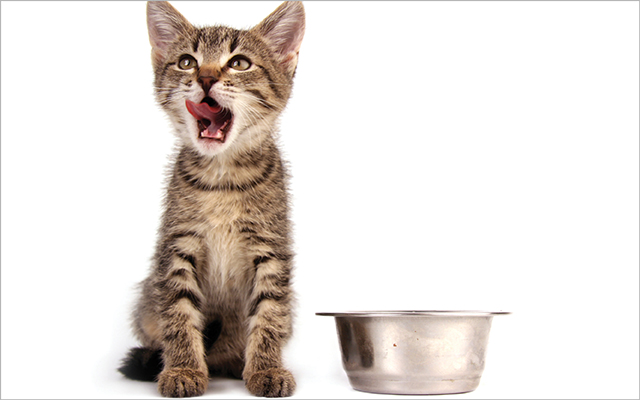When Karen Becker was studying to be a veterinarian, she enrolled in her school’s free pet-food program to feed her 7-year-old Rottweiler, Gemini. “I was a broke student,” she says. “I took all the freebies I could get.” After starting the new food, Gemini lost her appetite. Lethargy and vomiting soon followed. By the time Becker got her dog to a vet, the diagnosis was dire: acute liver failure. A liver biopsy confirmed that Gemini had recent chemical exposure.
As Becker fought to save the dog’s life, she retraced her steps, desperately looking for the cause. She picked up the food bag, flipped it over, and looked hard at the ingredients list. That’s when she noticed an unfamiliar word — ethoxyquin. Becker discovered it’s a preservative used in pet food that can cause liver problems. She was devastated. Gemini survived, but Becker never forgot the lesson.
“I wasn’t paying attention to what I fed my dog,” she says. “I trusted the pet-food companies to have the best interest of my dog at heart.”
Animal lovers everywhere are scrutinizing pet food like never before. Fears are fueled not only by horror stories like Becker’s, but also by numerous pet-food recalls and increasing rates of food-related illness, like obesity.
More than 52 percent of our dogs and 58 percent of our cats are overweight or obese, according to a 2012 Association for Pet Obesity Prevention survey. Those extra pounds can lead to arthritis, type 2 diabetes, and even cancer. Follow those diseases to their roots and a common denominator is commercial pet food.
“The food we give our animals is creating generations of fat, diabetic, cancer-riddled pets,” says Becker. “We forget that in pets, just as in people, foods can either heal or harm.”
Compounding the problem is that most vets learn little about nutrition. Only a handful of U.S. veterinary schools have board-certified, small-animal nutrition specialists on faculty. “In my nutrition class, we had one day on dogs and one sentence on cats,” says veterinarian Nancy Scanlan, DVM, American Holistic Veterinary Medical Association executive director. “Everything else I learned in veterinary school came from dog-food representatives who’d come to campus.”
Becker, now an integrative veterinarian near Chicago, points out that pet food wasn’t always prepackaged. Up until the 1950s, in fact, only a limited number of pet foods were available; most people fed their pets table scraps.
The industrialization of our food supply has since created a steady stream of waste that is now turned into pet food: Animal carcasses, old grains, and scraps of fruits and vegetables are processed and resold as meals for our furry friends. So instead of feasting on their own families’ leftovers, pets consume the nation’s scraps — to the tune of $21 billion in 2013 alone.
“The pet-food industry has convinced generations of Americans that pets must have ‘pet food’ to be healthy,” Becker says. Yet, “pets aren’t designed to eat rendered, processed, chemically ridden, or grain-based foods.”
Nutrition Needs
Like humans, dogs and cats need a daily variety of protein, vitamins, and minerals. Unlike humans, most dogs and cats eat the same food at every meal. Therefore, pet food needs to deliver a lot of nutrition in every bite. Nutritional standards help streamline the process. Those standards are set by the Association of American Feed Control Officials (AAFCO), and labels on pet foods state whether they meet AAFCO guidelines for being “complete and balanced.”
Some vets, however, think our pets’ health is declining in part because AAFCO standards aren’t high enough or species-appropriate. They blame processing for destroying nutrients. And although synthetic vitamins are added back into the processed mix, vets worry that the end result is less bioavailable, leaving pets in a constant state of nutritional deprivation. Becker likens commercial pet food to meal-replacement bars. “You can grab one in a pinch,” she says, “but you’d never raise a child on them.”
Another bone of contention is the number of artificial colors, flavors, and preservatives in commercial pet foods. “Those ingredients are just as unhealthy for dogs and cats as they are for people,” says Scanlan.
And then there are the toxins embedded in pet food by the processing itself. Dry pet food is cooked in a way that creates a probable carcinogen called acrylamide. Roughly half of all dogs more than 10 years old die of cancer. Whether the cancer is caused by old age or diet is impossible to determine, but Swedish researchers who compared levels of acrylamide in wild animals with those in domesticated animals found “unexpectedly high levels” in the latter group. They suspect the acrylamide came from processed pet food.
“If your dog eats kibble every day, there could be an exposure concern to these toxins,” says Susan G. Wynn, DVM, a nutritionist and integrative veterinarian in Sandy Springs, Ga., and founder of the Veterinary Botanical Medical Association.
Iffy Ingredients
These concerns don’t even touch on the main ingredients in pet foods — animal byproducts and grains. The issue with byproducts is often one of transparency. “Animal byproducts” is a vague way of referring to what’s left after muscle meat is removed from a carcass. It may include lungs, spleen, kidneys, blood, bone, viscera, chicken heads and feet, and more. The trouble with byproducts is that the nutrients vary greatly: A buyer has no way of knowing whether the byproducts are organ meats, which are quite nutritious, or feet, which are not. It’s a “shell game,” warns Rebecca Remillard, PhD, DVM, DACVN, a clinical veterinarian specializing in nutrition at North Carolina State University’s College of Veterinary Medicine.
Grains are more straightforward, as they are clearly labeled on the ingredients list. Grains are an inexpensive source of protein and fiber. Plus, the inherent starch makes grains gooey, meaning they hold the other ingredients together.
Many integrative vets see the inclusion of grains in pet food as a clear case of companies putting profits ahead of pet health. They argue that dogs and cats evolved on a diet high in meat, not grains, and that it’s impossible for them to reach optimal health on carb-rich food. “Dogs and cats are not biologically designed to eat corn, wheat, rice, and soy on a daily basis,” says Becker. “They will survive, but they won’t thrive.”
Veterinarians who warn clients away from grain-heavy foods also argue that pets are much like people in that a high-carb diet can lead to blood-sugar spikes and diabetes. “We almost never saw type 2 diabetes in cats until people started feeding their cats dry food,” Scanlan explains.
And diabetes is just the beginning, says Becker. She blames a carb-based diet for obesity, metabolic syndrome, and a host of chronic inflammatory conditions that plague today’s pets, such as dermatitis, arthritis, and otitis. “The only reason companies include grains in dog and cat food is because they are a cheap source of calories,” she says. “Unfortunately, they are a good source of disease, too.”
Homemade or Raw Pet Foods
Because of concerns about commercial pet foods, a growing number of Americans are making their own cooked or raw meals for their pets.
While there’s no real way to know exactly how many people are making homemade foods, raw food sales grew 15 percent annually between 2010 and 2012 with no sign of slowing down. Becker encourages most of her clients whose pets have chronic health conditions to consider switching to raw food. “Dogs and cats are biologically designed to eat raw meat,” she says. “Raw meat satisfies their nutrient and moisture requirements in a way processed foods cannot.”
Raw pet food is made with meat, poultry, or fish, as well as fruits and vegetables, and, at times, they are fortified with minerals and vitamins; many raw products meet AAFCO standards for a complete and balanced diet. The diet’s acronym is BARF, which is short for “bones and raw food” or “biologically appropriate raw food.”
The idea is that raw food is healthier because it more closely resembles the animal’s evolutionary diet. (For anyone familiar with the Paleo diet, this may sound familiar.) Some of the changes Becker regularly sees when clients transition their dogs and cats to a raw diet include reduced shedding, less gas, and improved muscle tone.
Not everyone is onboard with raw. The American Veterinary Medical Association and the FDA discourage people from buying raw pet food because studies indicate raw foods are more likely to be contaminated with pathogens, such as Salmonella, E. coli, and Listeria monocytogenes. Bugs like these can sicken pets as well as people, especially those with vulnerable immune systems.
Rae Greiner, a professor in Bloomington, Ind., started making food for her terrier mix, Milo, when he refused to take his medicine. Now Milo happily gobbles his diet of chicken and veggies as well as grain-free kibble (pill included), but Greiner worries about his overall nutrition.
She’s right to be concerned, says Becker. “Homemade food can be the best or worst food for your pet,” she says, because it’s easy to overlook key nutrients. Dogs and cats need upwards of 40 specific micro- and macronutrients a day. A nutritional deficiency will surface more quickly in a dog or cat than in a person because pets eat a more controlled and unvaried diet than humans.
One of the most common deficiencies in pets that subsist on a homemade diet is calcium depletion. “One of my clients only fed her cat chicken breasts,” Scanlan says. “Over time, the cat’s joints collapsed. People forget that in the wild, cats eat the entire prey animal, not just the muscle meat. Bones are a great source of calcium.”
An option is to stay with commercial food but “if you are cooking veggies or meat for yourself, add some to your pet’s food,” says Scanlan. She recommends carrots, bits of meat, and anything green and leafy, like broccoli or kale. This goes for cats, too, she says. “You’ll be surprised at what most cats will eat.” (Avoid onions, garlic, macadamia nuts, grapes, and raisins.)
Another way to boost the nutrients in kibble is to add canned pet food. Typically, the protein in canned food is better than the protein in dry food. “Canned foods are similar in composition to raw foods,” says Greg Aldrich, PhD, a Kansas State University animal nutritionist. “They have a little more water added but are mostly meat.”
For cats, especially, canned food is a good option. Cats don’t drink a lot of water, so giving them canned food is a good way to keep them hydrated. A lack of moisture in dry kibble can result in kidney problems and urinary tract issues, which plague cats. Canned food is more expensive, so if you can’t afford to switch entirely, make one of your cat’s daily meals canned and the rest dry.
Even more important than what you feed your pet, however, is shifting the way you think about your pet’s health. Most people are reactive, waiting until their pets are sick before making a change for the better. “What we need is for more people to be proactive, which means intentionally creating wellness,” Becker says, “and the best place to start is with food.”
Upgrading Your Pet’s Diet
The sheer variety of pet foods on the market is paralyzing. But, nutritionally speaking, most commercial dog and cat foods are more alike than their labels suggest. The good news is that there are plenty of easy ways to improve your pet’s diet. Here are a few tips from our experts.
If you currently buy inexpensive commercial kibble . . .

- Buy a food that has a nutritional adequacy statement. To earn a nutritional adequacy statement from the Association of American Feed Control Officials, pet-food makers must show that the food meets certain nutritional standards. The label also notes how the company met the standards — either through lab analysis or animal-feeding trials (the gold standard).
- Consider going grain-free. Grain-free pet foods must rely on higher-quality ingredients, so they tend to cost more. Higher-quality ingredients are often more filling, though, which is why the suggested servings are significantly less.
- Consider switching foods every few months. Holistic vets explain that different foods contain different nutrient profiles that can benefit your pet. But don’t switch cold turkey. Transition your pet over a week by tapering off the old food and gradually increasing the new food.
If you’re thinking of upgrading from a midrange kibble to a top-of-the-line brand . . .
- Beware of gimmicks. Marketers throw around terms consumers want to hear, such as “natural,” “organic,” “gourmet,” “premium,” and “ultra premium,” says clinical veterinarian Rebecca Remillard, PhD, DVM, DACVN. Your best bet, if you want your pet to enjoy the benefits of organic foods, is to simply add them yourself.
- Choose a food that clearly states what byproducts it contains. While many byproducts are edible, their nutritional status varies. For example, some slaughterhouse extras, such as organ meats, can be an excellent source of nutrition, but you don’t want a bunch of chicken feet, which are low-quality protein, says Nancy Scanlan, DVM, American Holistic Veterinary Medical Association executive director.
- Weigh the merits of a food by all its ingredients, not just the first. Chicken may be the first ingredient listed but only because it contains a lot of water and, therefore, is heavy. If the next few ingredients on the label are things like wheat flour, ground wheat, and wheat middling, then the food may actually contain more grain than chicken, says Joe Bartges, DVM, PhD, professor of medicine and nutrition at the University of Tennessee’s College of Veterinary Medicine: “Just because a protein source is listed first does not mean the diet is high in protein.”
- Supplement a cat’s diet with wet food. Experts agree that a diet of 100 percent dry food is bad for cats. Dry food lacks the moisture cats need to support a healthy urinary tract. If switching over exclusively to wet food is too expensive, try to supplement once a day.
If you’re thinking of making the leap to raw food . . .

- Consider the cost-benefit ratio. For a 30-pound dog, a year’s worth of commercially available frozen raw food can cost between $900 and $1,800 — quite a bit more than the $254 the average dog owner spends annually. In the end, it comes down to your pet. Raw food can be a great choice for athletic dogs, like sled dogs, and animals with certain chronic ills, like autoimmune issues or skin problems. “But, if your dog is a healthy house pet, raw food may be more trouble than it’s worth,” says Greg Aldrich, PhD, an animal nutritionist and pet-food program coordinator at Kansas State University.
- Know that you’ll need to handle the food with care. Take the same precautions with prepping and cleaning up your pet’s food as you do when handling raw meat for your own meals.
If you’re thinking about going homemade . . .

- Be a stickler for details. Dogs and cats have complex nutritional needs. Once you find a good recipe, follow it to the letter. If you want to see what a homemade recipe involves, visit integrative vet Susan Wynn’s website (susanwynn.com).
Most important, keep in mind that there is no best dog or cat food. Your pet is your best guide. A properly nourished pet has well-formed stools; a rich, well-oiled coat; good energy; and healthy muscle tone, says Bartges. Conversely, intermittent vomiting, loose stools, and a diminished appetite are not normal. These are your pet’s way of telling you it’s time to revisit the pet-food aisle.




This Post Has 0 Comments